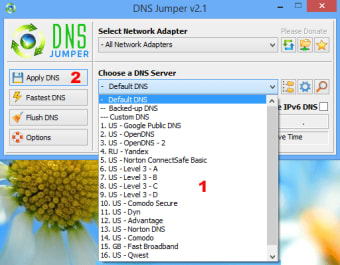
Root DNS servers: These servers are at the top of the DNS hierarchy and provide a list of top-level domain (TLD) servers to resolvers.That server tracks the IP address for the searched domain or hostname. Receive DNS queries from clients and resolve the human-readable domain name to an IP address. Recursive DNS server (DNS resolver): These servers are the first in the DNS check process.There are three types of DNS servers involved in the DNS resolution process: It is the internet's equivalent of a phone book, mapping human-readable domain names to IP addresses. What is a domain name system, and what type of DNS servers are involved in the DNS check process?ĭomain Name System (DNS) is a hierarchical decentralized system that maps domain names to IP addresses. That information is temporarily cached, and DNS servers will go for the updated DNS information when TTL (Time to Live) expires. The DNS client or the server may cache the information of the DNS records in its DNS cache.

The ISPs across the world have different caching levels. Or you can go for flushing your DNS cache. Thus, the new nameservers will not propagate instantly - ISPs have different cache refreshing levels, so some will still have the old DNS information in their cache.īut if, after that time interval, still, your new DNS changes are not reflecting, then you go for a DNS health check to ensure that your DNS changes are up to the mark and are following the standards. If it is not there, it will look it up by fetching DNS information from the authoritative DNS server of the domain to serve the user’s request, and it saves it for future use to speed up the DNS lookup process. Your request will not go to the hosting directly.Įach ISP node first checks its DNS cache, whether it has the DNS information for that domain. Suppose you changed your domain's nameservers and requested to open your domain on the web browser. You can look up A, AAAA, CNAME, and additional DNS records lookup from the Dig (DNS lookup) tool. However, most visitors see updated DNS records shortly after they change.

However, due to different DNS cache levels, some visitors might be directed to the old server’s IP for some time after the DNS records change and until it finishes propagating completely worldwide.
Dns jumper update update#
During this period, ISPs worldwide update their DNS cache with new DNS information for your domain. When you update your DNS records, the changes may take up to 48 hours to take effect. The IPv4 address comes as A record, and the IPv6 address is in AAAA record. A website could have IPv4 or IPv6 addresses or both. You need a site's IP address to know where it’s on the Internet. What is DNS resolution?ĭNS resolution translates the domain name into its server IP address. You can check your DNS propagation results from DNS Propagation Checker. It can take up to 48 hours to propagate worldwide.
Dns jumper update how to#
Note: Complete DNS Resolution may take up to 48 hours.ĭNS Propagation Checker - How to Check DNS Propagation GloballyĭNS Checker provides a free online DNS Checker tool to check DNS propagation globally. Kappa Internet Services Private Limited 115.178.96.2


 0 kommentar(er)
0 kommentar(er)
